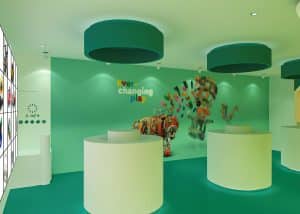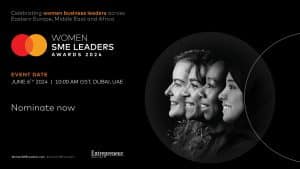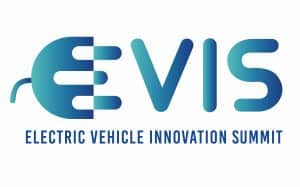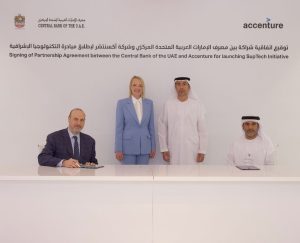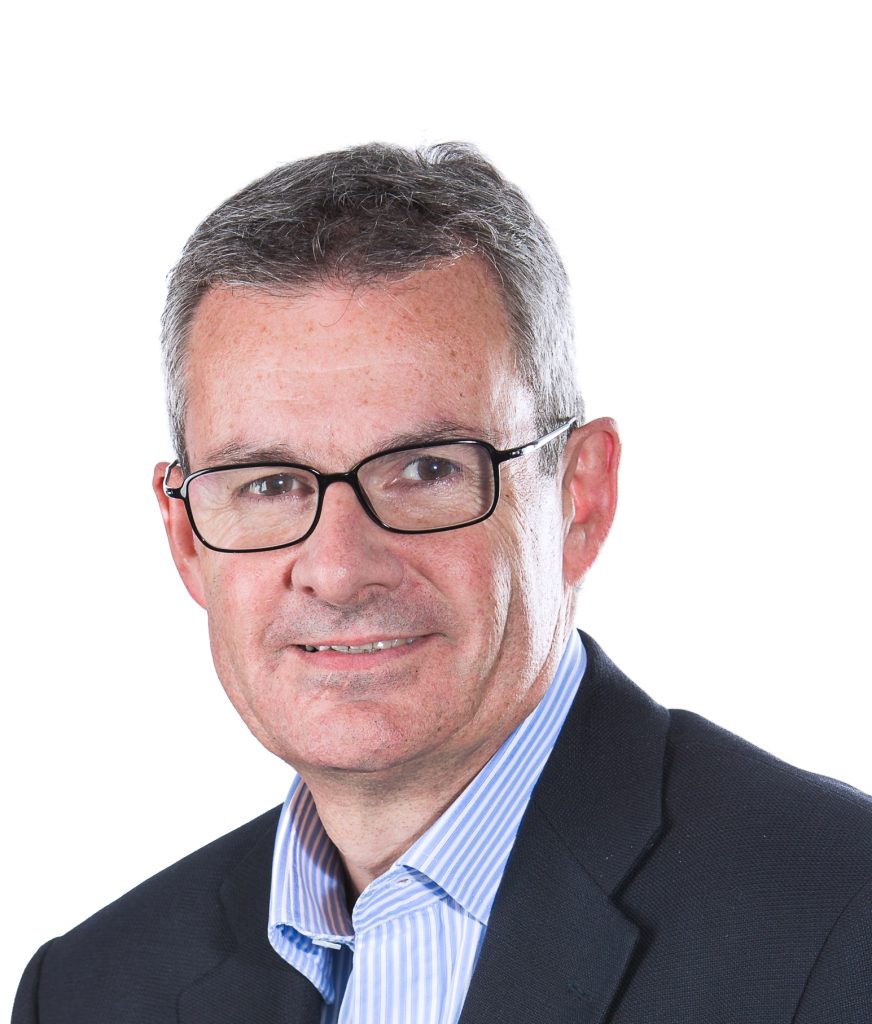
- What steps is Schneider Electric taking – globally and regionally – to achieve circularity within water systems?
Schneider Electric is actively pursuing circularity within water systems through a multifaceted approach that encompasses resource optimization, innovation, and collaboration, both on a global and regional scale.
To optimize resource usage, we’ve introduced intelligent water management solutions and technologies such as on line hydraulic simulation for infrastructure and real-time data analytics based on AI for plants.
Most of the clear water in the MENA region comes from desalination plants.
Hence, we are very active in driving circularity within the region, by working towards enhancing energy savings through the implementation of green energy sources.
By employing cutting-edge innovations like smart grids, IoT devices, and AI-powered analytics, our teams are dedicated to enhancing water management efficiency, reducing water loss, minimizing energy consumption, and optimizing resource utilization.
Recognizing the significance of collaboration, Schneider Electric has forged partnerships with diverse stakeholders, including governments, NGOs, and the private sector, to co-create and implement trailblazing water management solutions. A prime example of our collaborative efforts is the ambitious Zero Carbon Project, which aims to reduce CO2 emissions and elevate the sustainability of water systems through a multi-pronged strategy.
A crucial element of the Zero Carbon Project is our alliance with our top 1,000 suppliers, who contribute to 70% of our carbon emissions. We have set an ambitious target to reduce their operational CO2 emissions by 50% by 2025. This collaboration involves sharing best practices, supporting the adoption of renewable energy sources, and investing in energy-efficient technologies and circular practices.
- How does water fit in with your overarching sustainability goals at Schneider Electric?
Water is an essential aspect of Schneider Electric’s comprehensive sustainability objectives. Water scarcity and pollution present substantial challenges to the environment, human health, and economic growth. According to the UN’s Secretary General, nearly 1.8 billion people will live in areas with absolute water scarcity, and two-thirds of the world population could face water-stressed conditions by 2025.[1] Moreover, around 80% of the world’s wastewater is released into the environment without adequate treatment, exacerbating water pollution and health risks.[2]
Given these challenges, we have incorporated water management into our wider sustainability strategy, emphasizing responsible water use, waste reduction, and fostering circularity. Our dedication to water sustainability is demonstrated by our ambitious goals, which involve cutting our water consumption by 50% by 2025 and attaining water neutrality in water-stressed regions.
In addition, we have established a set of transformative Environmental, Social, and Governance (ESG) goals for 2025, monitored and evaluated through our Schneider Sustainability Impact (SSI) program. Based on the 2023 first-quarter results from our SSI program, we have made significant progress in Climate and Resources and Equal and Generations initiatives. With a consolidated SSI score of 5.25 out of 10 for the first quarter of 2023, we are on track to achieve our full-year target of 6 out of 10.
Water sustainability is also considered a vital aspect of our products and services. We provide innovative solutions such as EcoStruxure for Water and Wastewater, which are designed to help customers improve their water management practices, minimize waste, and contribute to global water sustainability objectives.
- Water resources in the region are under extreme stress; how is Schneider Electric disrupting the utilities landscape in this regard?
Water scarcity is a pressing issue in the MENA region, with the UAE and KSA facing significant challenges in managing their water resources. In the UAE, water demand is expected to grow by 30% by 2030[3], while in KSA, water consumption is already high at around 263 liters per capita per day,[4] compared to the global average of 170 liters.
To address this, we aim to enhance efficiency, resilience, and sustainability in water systems by employing cutting-edge technologies, including the Industrial Internet of Things (IIoT), big data analytics, and artificial intelligence. Our solutions assist water utilities in monitoring, controlling, and optimizing their operations, helping them decrease energy consumption, increase operational efficiency, and reduce the total cost of ownership.
For instance, in 2021, we signed an MoU with Saudi Arabia’s Water Transmission and Technologies Company (WTTCO) that aims to cut operation and maintenance costs to address water resource challenges in the MENA region.[5] In the UAE, we’ve recently collaborated with the Ministry of Industry and Advanced Technology (MoIAT) and the Ministry of Energy and Infrastructure (MoEI) to conduct a nationwide assessment of industrial companies in the UAE to help enhance their energy efficiency. The initiative is part of the UAE’s net-zero commitment to become a world leader in sustainability and supports the country’s National Energy and Water Demand Side Management Program 2050, which aims to reduce energy demand by 40%.
- Tell us a bit more about the EcoStruxure for Water and Wastewater Solutions and the impact it has on water systems?
EcoStruxure for Water and Wastewater Solutions is a key component of Schneider Electric’s commitment to sustainable water management. This innovative platform combines advanced technologies, such as IoT, analytics, and automation, to optimize the performance and efficiency of water and wastewater systems.
EcoStruxure enables utilities to monitor and control their networks in real-time, offering insights into water usage, consumption patterns, and system performance. This allows for proactive leak detection, reduced water loss, and better asset management. Furthermore, EcoStruxure facilitates the integration of renewable energy sources and energy storage systems, promoting energy efficiency and reducing greenhouse gas emissions.
The impact of EcoStruxure on water systems is significant. By optimizing the performance of water and wastewater networks, our customers can achieve substantial reductions in water loss, energy consumption, and operational costs. This ultimately contributes to improved water security, resilience, and sustainability.
In addition, the adoption of EcoStruxure allows utilities to better comply with regulatory requirements, reduce their environmental footprint, and enhance their reputation as responsible stewards of water resources. By implementing EcoStruxure for Water and Wastewater Solutions, utilities can not only achieve better efficiency and cost savings but also support global water sustainability goals, helping to address the challenges of water scarcity, pollution, and climate change.
- In your view, how does digitization contribute towards your company’s global water sustainability goals?
I believe that digitization is a major factor in achieving Schneider Electric’s global water sustainability objectives. It facilitates the creation and execution of cutting-edge solutions that enhance water management, minimize waste, and encourage circularity. Our recent partnership with the UAE Ministry of Industry and Advanced Technology (MoIAT) and the Ministry of Energy and Infrastructure (MoEI) is a great example of how digitization can contribute towards water sustainability goals. Through this collaboration, we are leveraging digital tools and technologies to monitor and optimize water usage in industrial facilities, helping to reduce water consumption and improve efficiency.
As a member of the Champions 4.0 Network, we are dedicated to expediting the adoption of Fourth Industrial Revolution (4IR) solutions across various industries. By implementing advanced technologies such as IoT, machine learning, and artificial intelligence, we are transforming the UAE into a global center for smart manufacturing and innovation.
This shift is crucial in achieving increased energy efficiency and meeting the 40% reduction in energy demand outlined in the National Energy and Water Demand Side Management Program 2050, ultimately progressing towards net-zero emissions. Additionally, automation enables the smooth integration of renewable energy sources and energy storage systems, assisting utilities in reducing their carbon footprints and attaining greater sustainability.
We also support our clients in their pursuit of more sustainable water management practices, contributing to the worldwide effort to protect our planet’s invaluable water resources.



